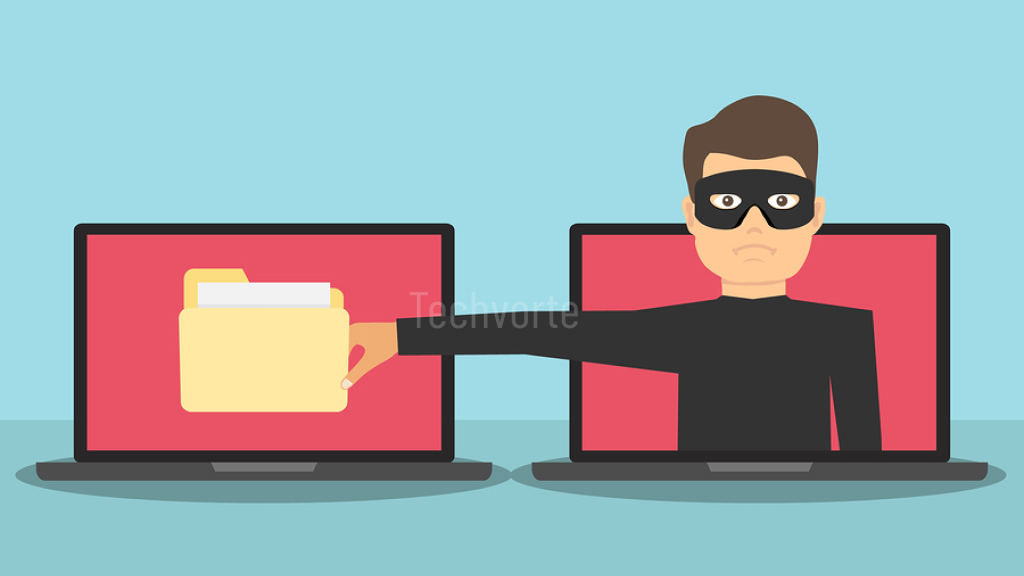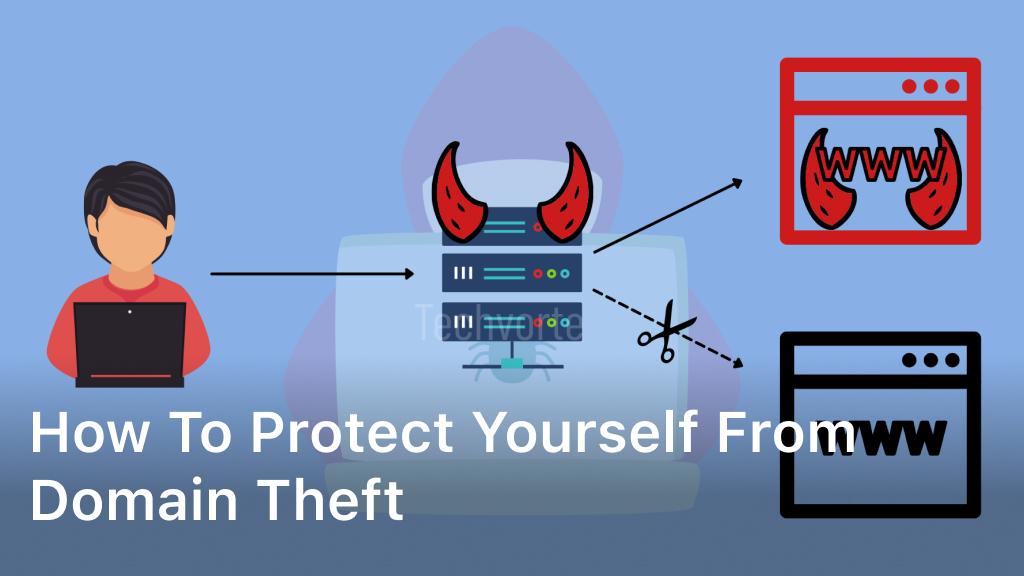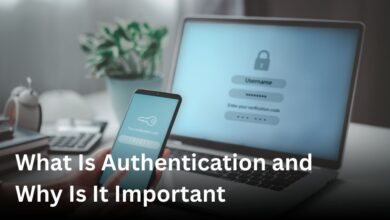Protecting your domain from theft is crucial to safeguarding your online presence. In today’s digital landscape, where cyber threats are on the rise, taking proactive steps to ensure the security of your domain is essential. In this article, we will provide you with valuable domain security tips to help prevent domain theft and keep your online asset safe.

Understanding Domain Theft and Its Consequences
In today’s digital age, securing your online assets is more important than ever. One crucial aspect of online security is protecting your domain from theft. Domain theft occurs when unauthorized individuals gain control over your domain and misuse it for their own purposes. This can lead to severe consequences, including financial loss, damage to your brand reputation, and disruption of your online presence.
To safeguard yourself and your business from the detrimental effects of domain theft, it is essential to understand the risks involved and take proactive measures to prevent such incidents. Implementing effective domain theft prevention strategies and ensuring secure domain ownership should be a top priority for every website owner.
The Consequences of Domain Theft
The consequences of domain theft can be devastating. They may include:
- Loss of control: Once your domain is stolen, you lose control over your website and its content. This can result in unauthorized access, tampering with sensitive information, or even complete shutdown of your online operations.
- Financial loss: Domain theft can lead to financial loss, as cybercriminals may exploit your compromised domain for fraudulent activities, redirecting traffic to malicious websites, or selling it on the underground market.
- Reputation damage: If your stolen domain is used for illegal activities or malicious purposes, it can significantly damage your brand’s reputation. Customers may lose trust in your business, leading to a decline in sales and credibility.
- Legal complications: Recovering a stolen domain can be a complex and time-consuming process, involving legal actions and disputes. It may result in costly legal expenses and potential lawsuits.
Given the potential consequences, taking proactive steps to prevent domain theft is crucial to ensure the security and integrity of your online presence.
Preventing Domain Theft
Protecting your domain requires a multi-layered approach. Here are some domain theft prevention strategies:
- Choose a reputable domain registrar: Select a trusted and reliable domain registrar to ensure secure domain registration and management. Research the registrar’s security measures, such as two-factor authentication and data encryption.
- Enable domain lock: Use the domain lock feature provided by your registrar to prevent transfers or changes to your domain settings without your authorization.
- Maintain strong passwords: Use strong, unique passwords for your domain registrar account and regularly update them. Avoid using easily guessable passwords or reusing passwords from other accounts.
- Monitor your domain regularly: Keep an eye on your domain’s WHOIS information and expiry dates. Set up alerts for any changes or renewals to ensure you maintain full control over your domain.
- Enable two-factor authentication: Activate two-factor authentication for your domain registrar account and any associated email addresses to add an extra layer of security.
- Protect your contact information: Opt for private domain registration to keep your personal details, such as your name, address, and phone number, confidential. This prevents potential attackers from easily obtaining your contact information.
Implementing these domain theft prevention strategies can significantly reduce the risk of domain theft and help you maintain secure domain ownership.
Implementing Strong Security Measures
When it comes to safeguarding your domain name and ensuring secure domain registration, implementing strong security measures is crucial. By taking proactive steps, you can protect your online asset from potential theft and unauthorized access. Here are some actionable tips to enhance your domain security:
Safeguarding Your Domain Name
- Choose a strong and unique domain name that is not easily guessable or prone to phishing attempts.
- Regularly monitor your domain registration details and keep them up to date to prevent any unauthorized changes.
- Enable domain privacy services to hide your personal contact information from WHOIS databases, reducing the risk of identity theft.
Secure Domain Registration
- Register your domain with a reputable and trusted registrar that offers advanced security features.
- Utilize two-factor authentication (2FA) or multi-factor authentication (MFA) for an added layer of security during the registration process.
- Choose a registrar that offers domain lock or transfer lock features to prevent unauthorized domain transfers.
Adopting Effective Domain Security Measures
- Regularly update your domain management account password and use a strong and complex password that includes a mix of uppercase and lowercase letters, numbers, and special characters.
- Enable registrar alerts and notifications to stay informed about any changes or suspicious activities related to your domain.
- Consider using domain monitoring services that scan the web for any instances of your domain being misused or compromised.
- Implement DNSSEC (Domain Name System Security Extensions) to protect against DNS hijacking and ensure the integrity of your domain’s DNS records.
By following these measures, you can significantly reduce the risk of domain theft and fortify the security of your online presence. Remember, safeguarding your domain name and adopting secure domain registration practices are essential steps in protecting your valuable asset in the digital world.
Best Practices for Maintaining Domain Security
Protecting your website domain is crucial in maintaining the security and integrity of your online presence. By implementing these best practices, you can ensure the safety of your domain and prevent unauthorized access or theft.
Regularly Update Contact Information
One of the most important steps in domain security is to regularly update your contact information. By keeping your information current, you can receive critical notifications and remain informed of any potential threats or domain-related issues.
Use Secure Passwords
Choosing a strong and unique password is essential to secure your domain. Avoid common passwords or personal information, and opt for a combination of upper and lowercase letters, numbers, and special characters. Regularly update your password to further enhance security.
Keep Domain Registration Details Confidential
It is crucial to keep your domain registration details confidential. Avoid sharing sensitive information such as domain registration emails, administrative logins, or account credentials with unauthorized individuals. This will prevent any potential unauthorized access to your domain.
Set Up Two-Factor Authentication
Implementing two-factor authentication (2FA) adds an extra layer of security to your domain. By requiring a verification code in addition to a password, you can significantly reduce the risk of unauthorized access.
Monitor Your Domain Regularly
Regularly monitoring your domain is essential to identify any suspicious activities or potential security threats. Keep an eye on emails, notifications, and domain logs for any unusual changes or unauthorized access attempts.
Stay Updated with Security Best Practices
Stay informed about the latest domain security best practices and recommendations. By keeping up-to-date with industry trends and advancements, you can proactively protect your website domain from evolving threats.
By following these best practices, you can protect your website domain, ensure secure domain ownership, and significantly reduce the risk of domain theft or unauthorized access.
Conclusion
In today’s digital landscape, protecting yourself from domain theft is crucial for safeguarding your online presence. By implementing strong domain security measures, you can mitigate the risk of unauthorized access and potential loss of your valuable domain.
Throughout this article, we have explored the concept of domain theft, its consequences, and practical strategies to prevent it from happening to you. It is essential to be proactive in securing your domain name, registering it with a reputable domain registrar, and adopting industry best practices.
By regularly updating your contact information, using secure passwords, and keeping your domain registration details confidential, you can significantly reduce the likelihood of falling victim to domain theft. Remember, maintaining domain security is an ongoing process that requires diligence and vigilance.
Protecting yourself from domain theft is not a luxury; it is a necessity. Take the necessary steps today to ensure the security of your domain and avoid the potential implications of unauthorized access or loss. With these domain security tips in mind, you can confidently navigate the digital landscape and protect your online assets.
FAQ
Why is it important to protect your domain from theft?
Protecting your domain from theft is crucial because if someone gains unauthorized access to your domain, they can hijack your website, steal sensitive information, or even sell your domain for their benefit.
What are some strategies to prevent domain theft?
To prevent domain theft, you can start by selecting a reputable domain registrar, enabling two-factor authentication, regularly updating your passwords, keeping your domain registration details confidential, and monitoring your domain for any suspicious activity.
How can I safeguard my domain name?
Safeguarding your domain name involves ensuring that your contact information in the domain registration is up to date, using privacy protection services to limit access to your personal information, and implementing domain locks or transfer locks to prevent unauthorized transfers.
What steps should I take to secure my domain registration?
To secure your domain registration, you should enable domain locking to prevent unauthorized changes, regularly review and update your registrar account login credentials, enable email notifications for any domain-related changes, and use a secure email address associated with your domain.
How can I adopt effective domain security measures?
Adopting effective domain security measures involves implementing strong passwords with a combination of letters, numbers, and special characters, regularly updating your domain’s content management system and plugins, and keeping your antivirus software up to date.
Why is it important to regularly update my domain information?
Regularly updating your domain information ensures that your contact details are accurate and up to date, allowing you to receive important notifications from your domain registrar and making it easier to verify your ownership in case of any disputes or potential theft attempts.
How can I keep my domain registration details confidential?
To keep your domain registration details confidential, you can opt for privacy protection services offered by your registrar to replace your personal information with their contact information in the public WHOIS database.





